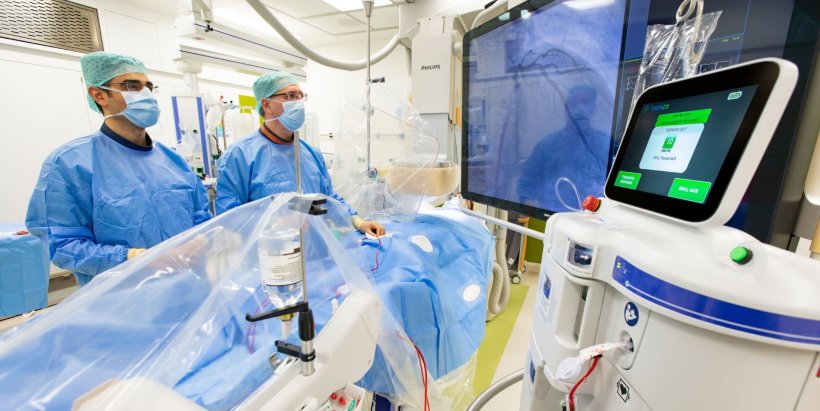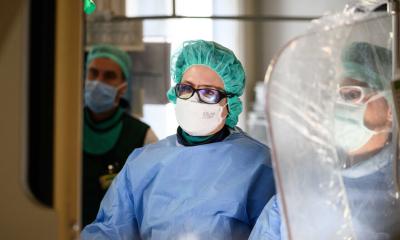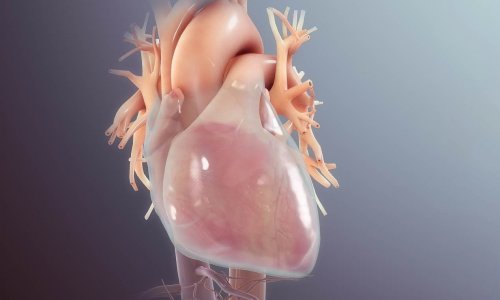
Image source: Karin Kaiser / MHH
News • New cardiology approach
Super saturated oxygen therapy reduces consequences of heart attack
In Germany, more than 200,000 people suffer a heart attack every year. Despite good medical care, many are left with reduced cardiac output. This is particularly true for patients with severe heart attacks:
More than 30 percent of those affected develop heart failure, and almost half of them die within the next five years. Experts at the Department of Cardiology and Angiology at Hannover Medical School (MHH) are now using a new treatment procedure for severe heart attacks. The team led by Professor Dr. Andreas Schäfer, Head of Cardiovascular Intensive Care Medicine, is using - for the first time in Europe - the new SuperSaturated Oxygen (SSO2) therapy to reduce the extent of heart attacks. The procedure is a therapy already approved in the United States. It was newly approved in Europe in 2020. So far, three patients have been treated with the new method at the MHH. In them, the damage to the heart muscle was significantly reduced.
Our first patients showed significantly less muscle breakdown than expected, the formed scars of the heart muscles were only minor, and the pumping capacity of the heart showed no relevant limitations
Johann Bauersachs
A heart attack occurs when the blood flow and thereby the oxygen supply to the heart is disturbed. Despite reopening of the coronary artery through a heart catheter, many patients suffer irreversible damage to the heart muscles, the so-called infarction. SSO2 therapy is performed in patients who have suffered the most dangerous form of heart attack, a large so-called anterior wall infarction. "These dangerous heart attacks often damage the heart so severely that patients who survive it develop severe heart failure due to the large scarring of the heart muscle," explains Professor Schäfer. These patients can benefit from SSO2 therapy. It is used in the event of an acute heart attack, directly after the previously occluded coronary vessel has been reopened through a catheter. During SSO2 therapy, cardiologists, also using a catheter, deliver oxygen dissolved in the blood directly to the damaged heart muscle through positive pressure. This takes about 60 minutes. The result: Due to the increased oxygen concentration, the muscle can regenerate better. "Study data to date on SSO2 therapy show that it reduces the damage to the heart muscle. Our first patients showed significantly less muscle breakdown than expected, the formed scars of the heart muscles were only minor, and the pumping capacity of the heart showed no relevant limitations," says Professor Johann Bauersachs, M.D., Director of the Department of Cardiology and Angiology. SSO2 therapy improves blood flow in the smallest vessels, which is restricted by oxygen deficiency, and reduces heart muscle damage.
Source: Hannover Medical School
19.05.2021











